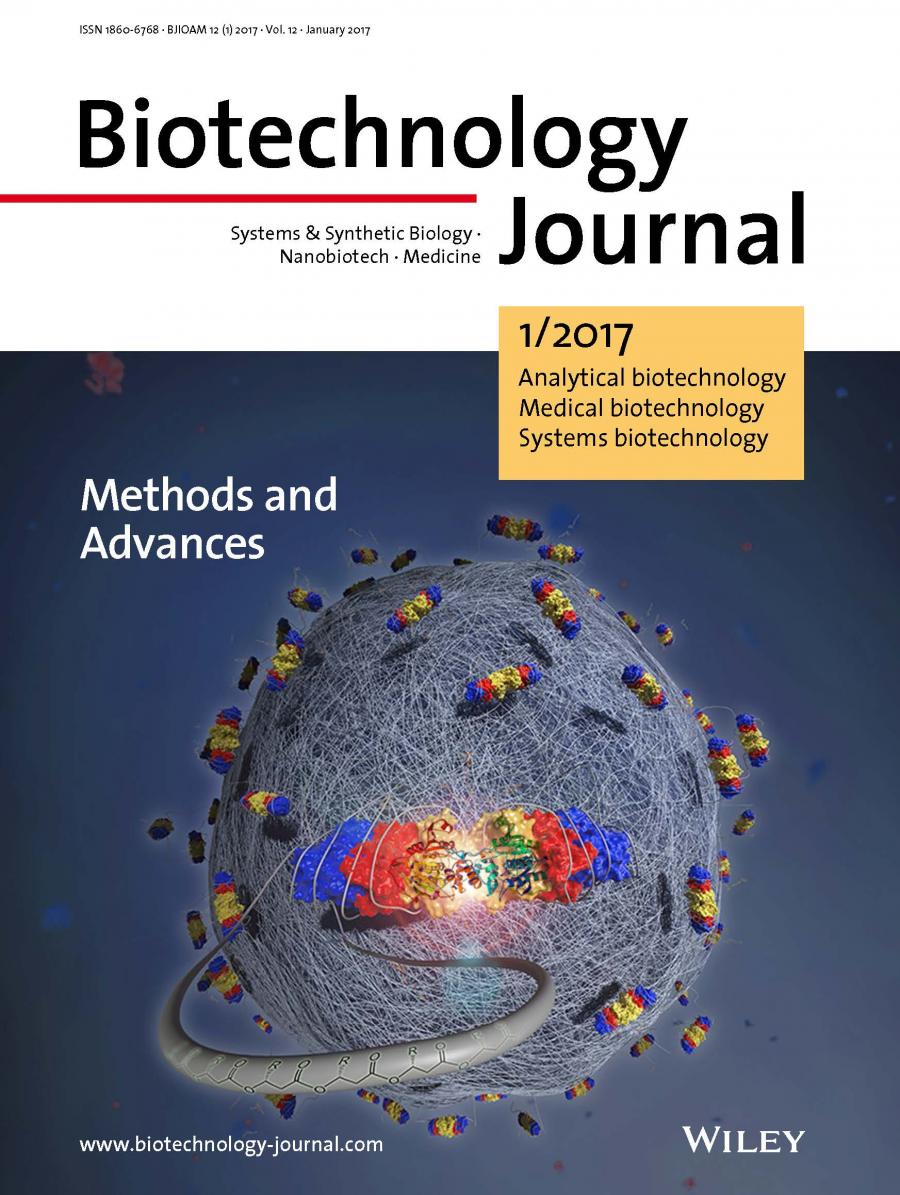- [cover paper] Structure and function of the N-terminal domain of Ralstonia eutropha polyhydroxyalkanoate synthase, and the propo
- 관리자 |
- 2017-04-11 17:20:55|
- 7072
- 2017-04-11 17:20:55|
Title: Structure and function of the N-terminal domain of Ralstonia eutropha polyhydroxyalkanoate synthase, and the proposed structure and mechanisms of the whole enzyme
Author: Kim, Y-J., Choi, S.Y., Kim, J.E., Jin, K.S., Lee, S.Y., Kim, K-J.
Journal: Biotechnol. J., 12(1): 1-12 (2017. 1)
Abstract:
Polyhydroxyalkanoates (PHAs) are natural polyesters synthesized by numerous microorganisms as energy and reducing power storage materials, and have attracted much attention as substitutes for petroleum-based plastics. In an accompanying paper, the authors reported the crystal structure of the C-terminal domain of Ralstonia eutropha PHA synthase (PhaC1). Here, the authors report the 3D reconstructed model of full-length of R. eutropha PhaC1 (RePhaC1F) by small angle X-ray scattering (SAXS) analysis. The catalytic C-terminal domain of RePhaC1 (RePhaC1CD) dimer is located at the center of RePhaC1F, and the N-terminal domain of RePhaC1 (RePhaC1ND) is located opposite the dimerization subdomain of RePhaC1CD, indicating that RePhaC1ND is not directly involved in the enzyme catalysis. The localization studies using RePhaC1F, RePhaC1ND and RePhaC1CD revealed that RePhaC1ND plays important roles in PHA polymerization by localizing the enzyme to the PHA granules and stabilizing the growing PHA polymer near the active site of RePhaC1CD. The serial truncation study on RePhaC1ND suggested that the predicted five α-helices (N-α3 to N-α7) are required for proper folding and granule binding function of RePhaC1ND. In addition, the authors also report the SAXS 3D reconstructed model of the RePhaC1F/RePhaMΔC complex (RePhaMΔC, PAKKA motif-truncated version of RePhaM). RePhaM forms a complex with RePhaC1 by interacting with RePhaC1ND and activates RePhaC1 by providing a more extensive surface area for interaction with the growing PHA polymer.

| 첨부파일 |
|
|---|

